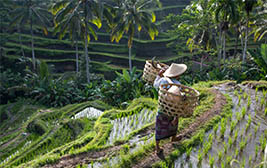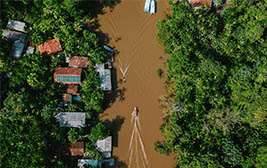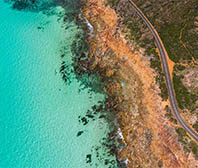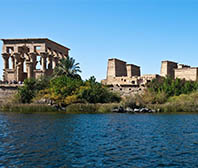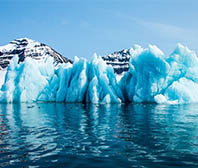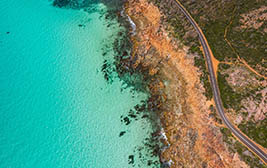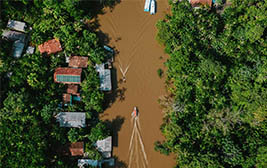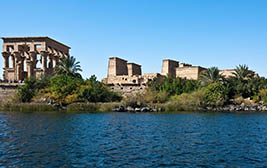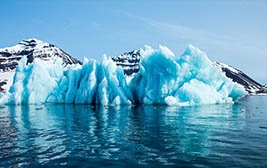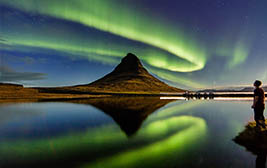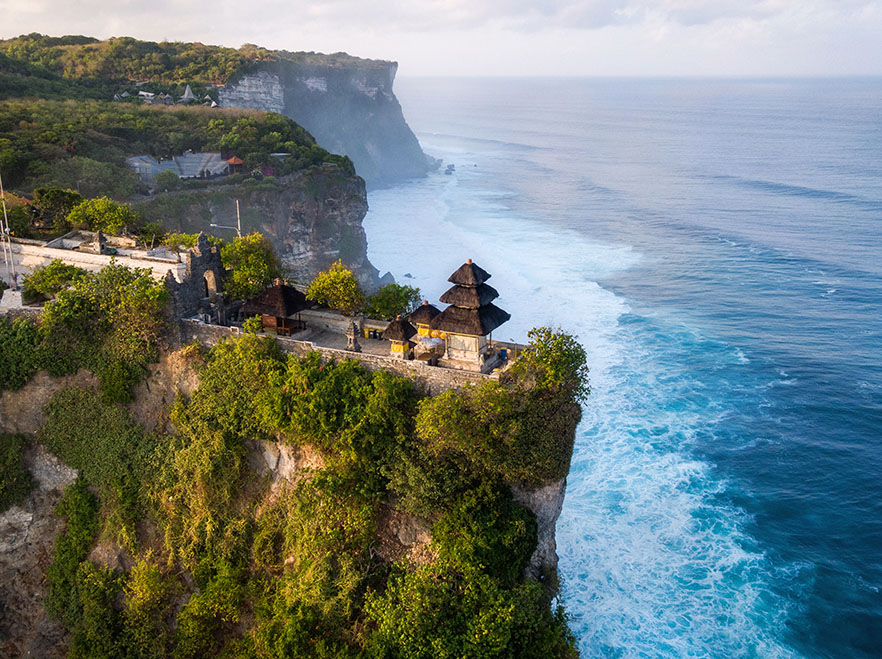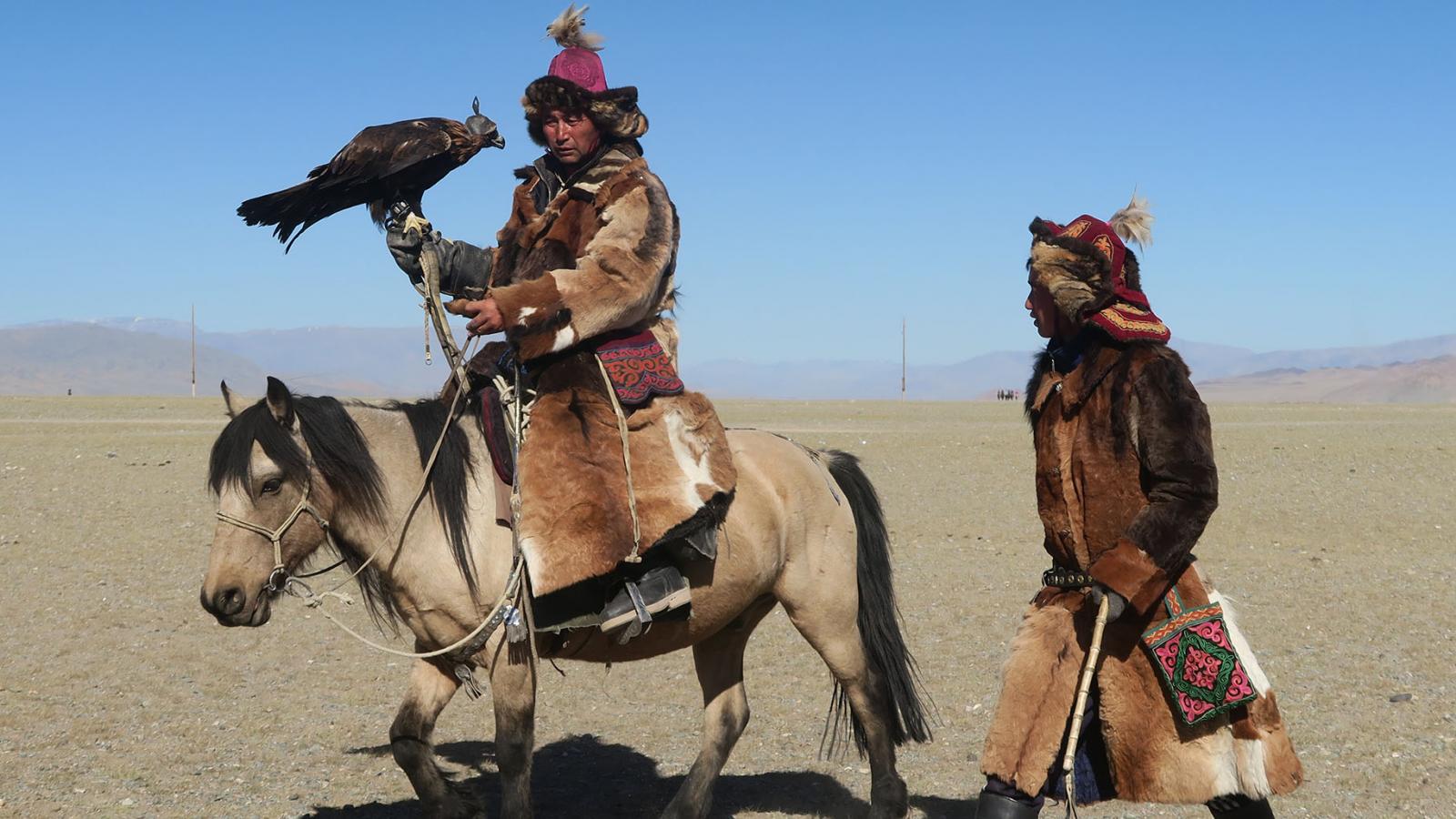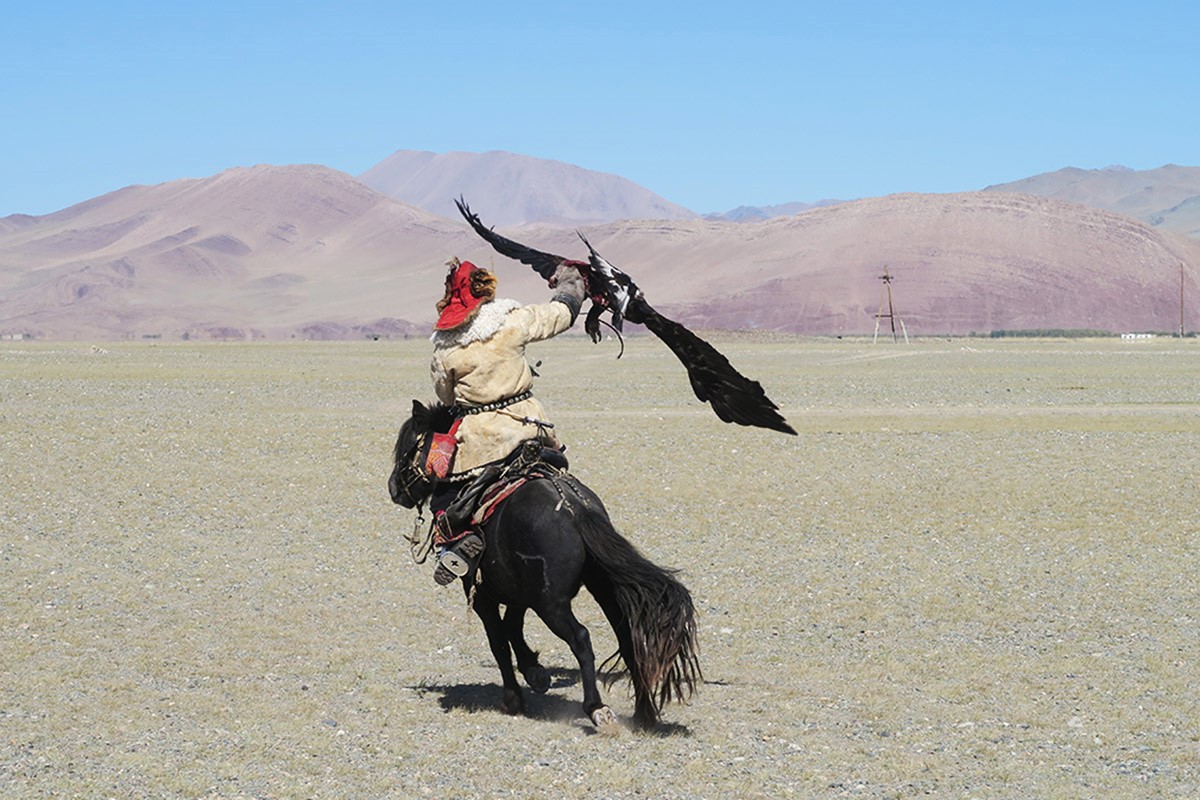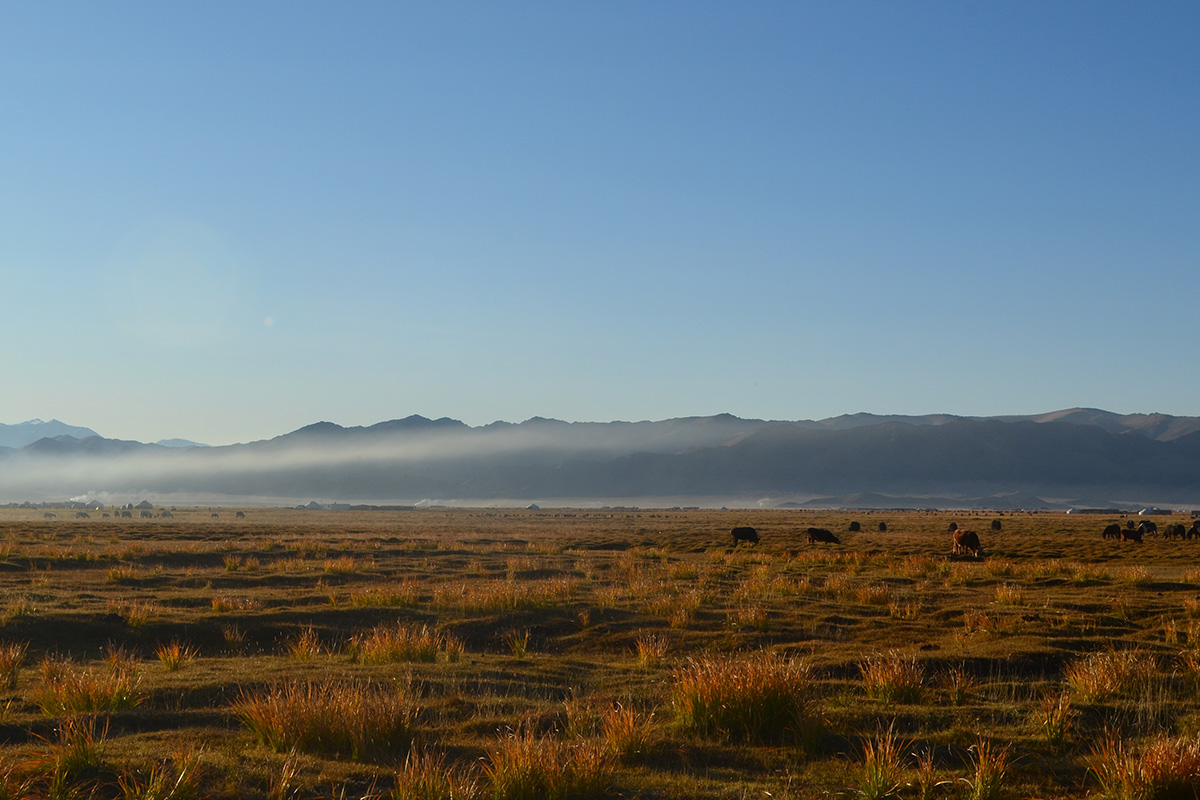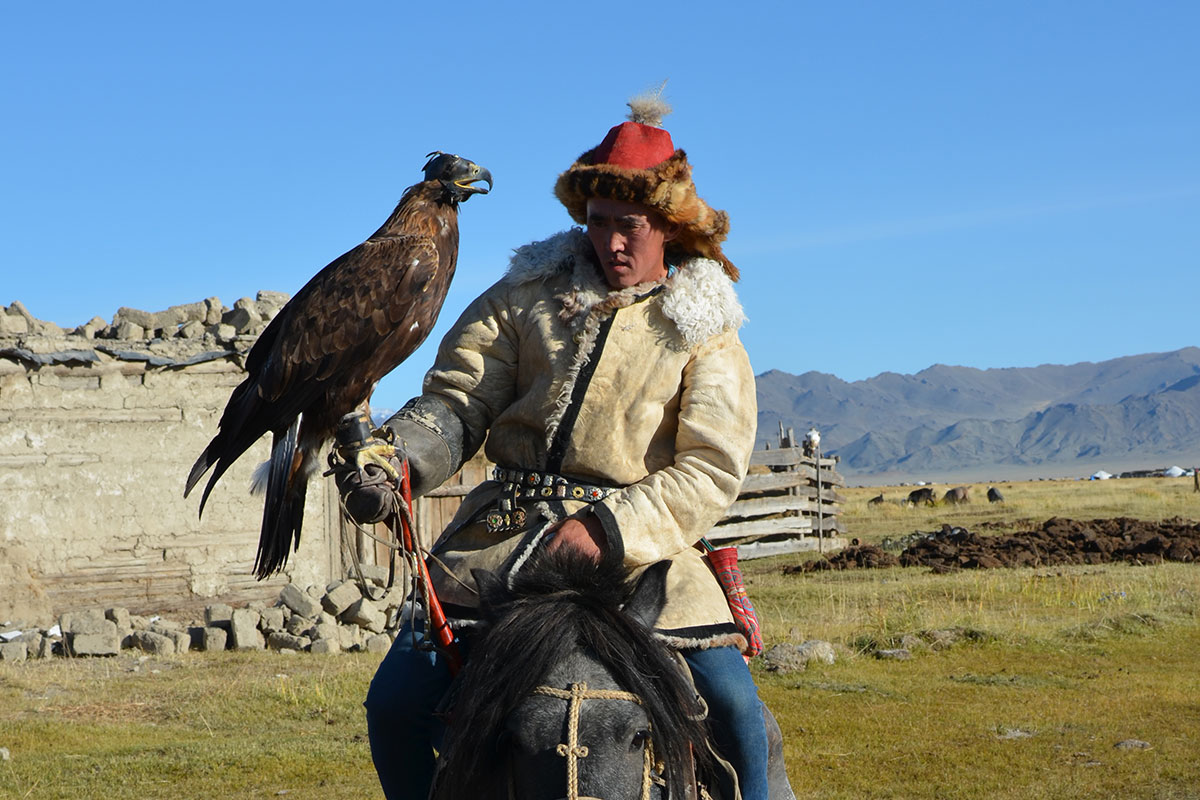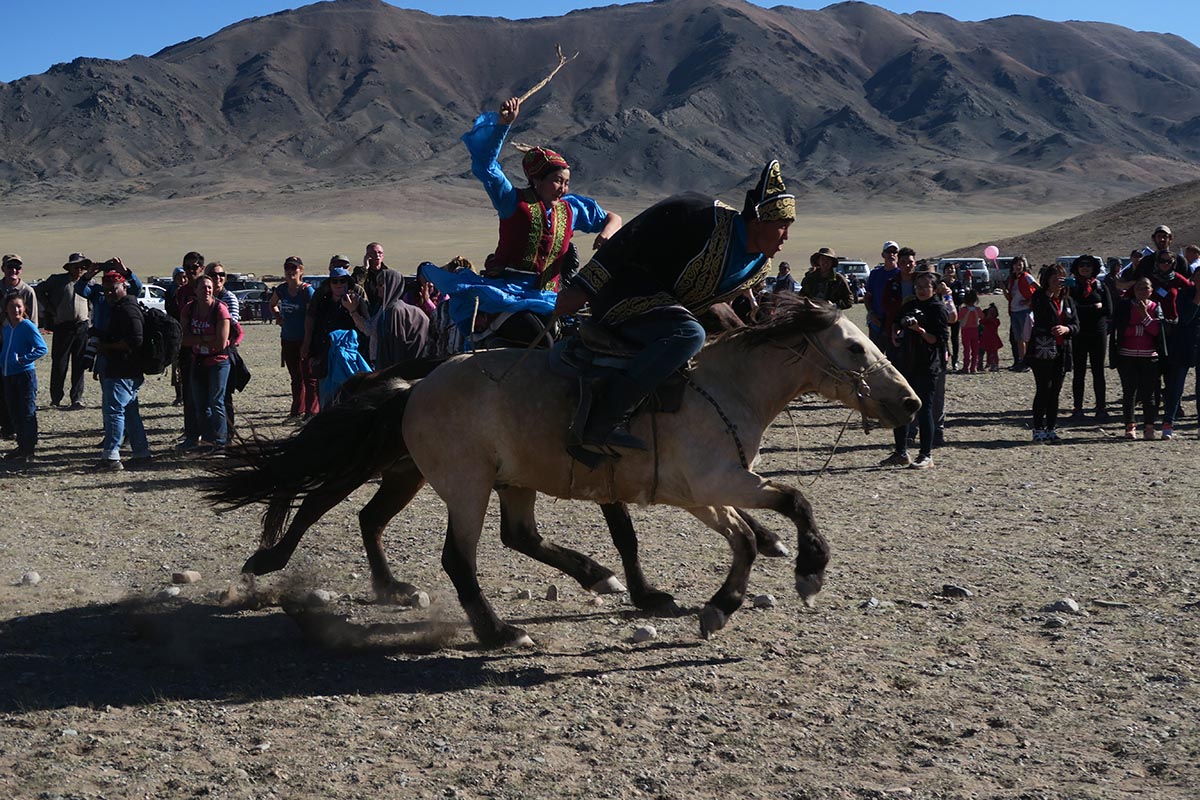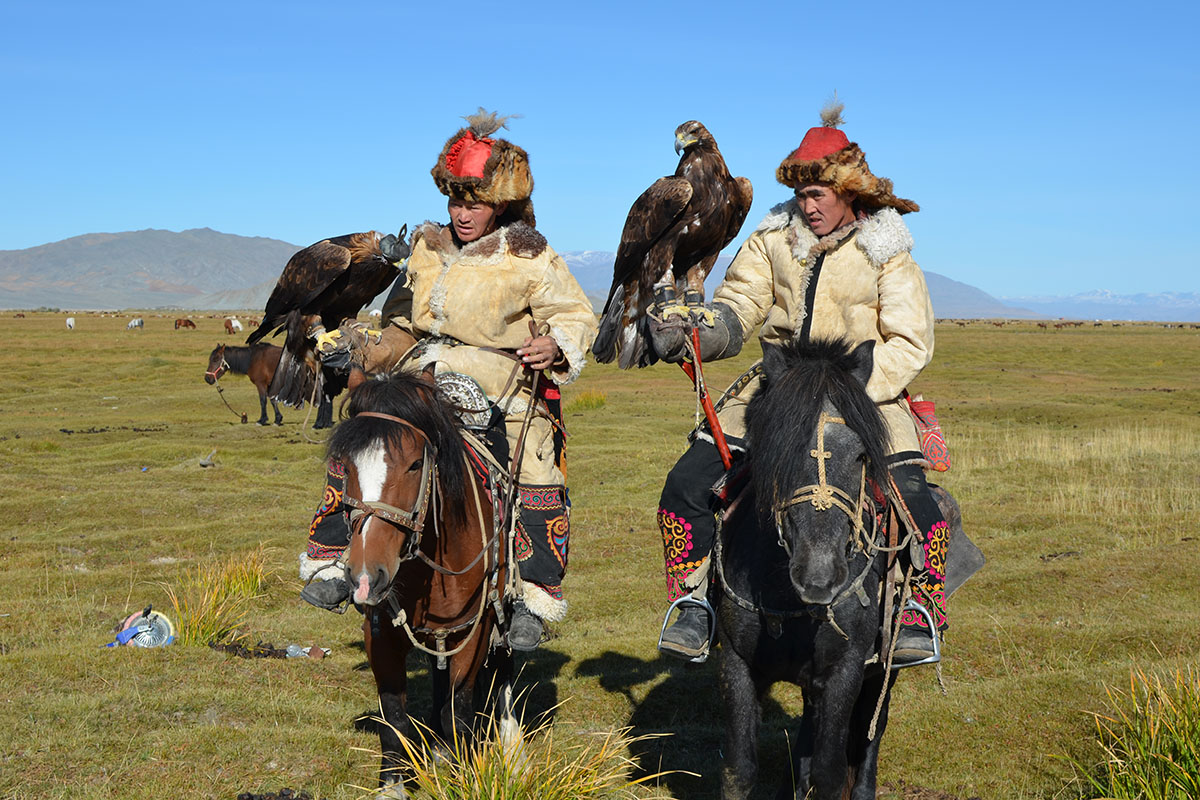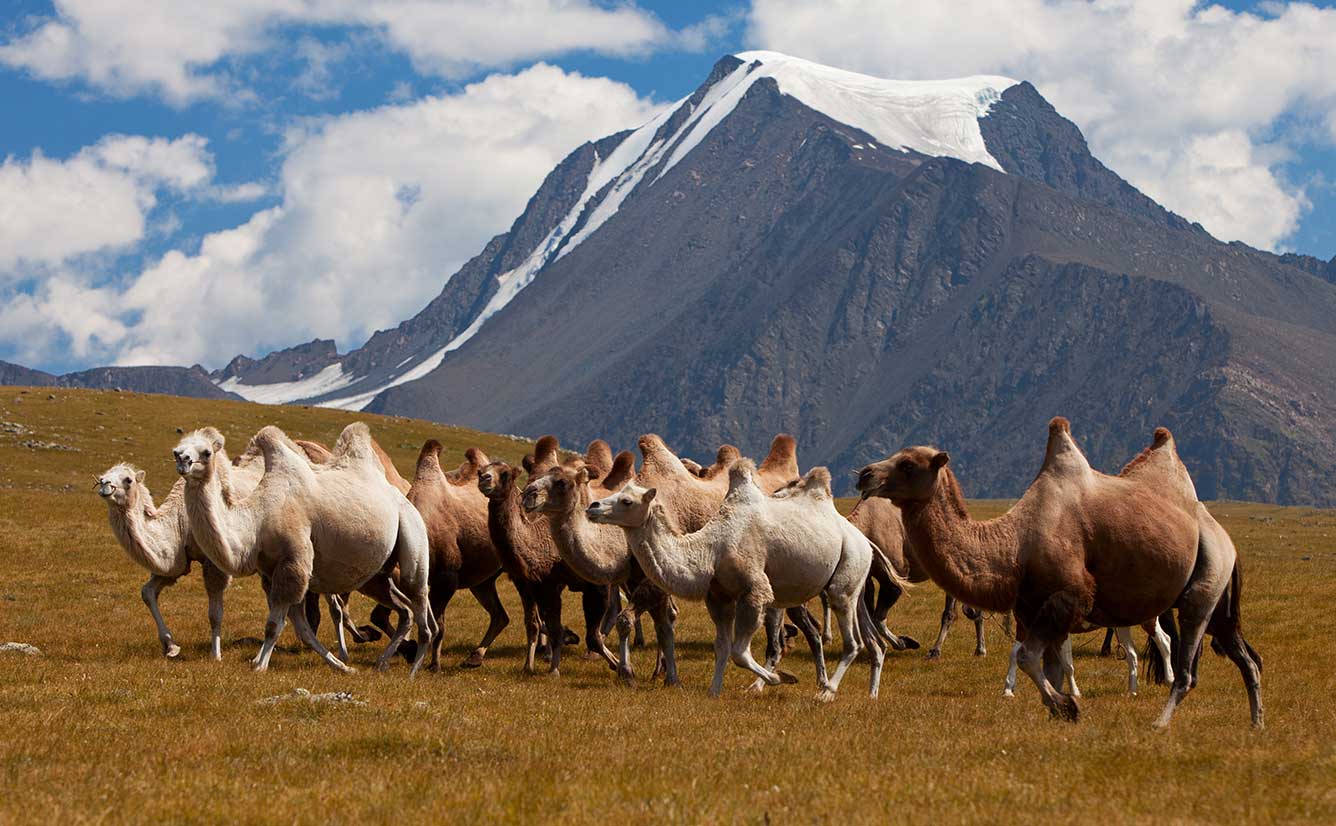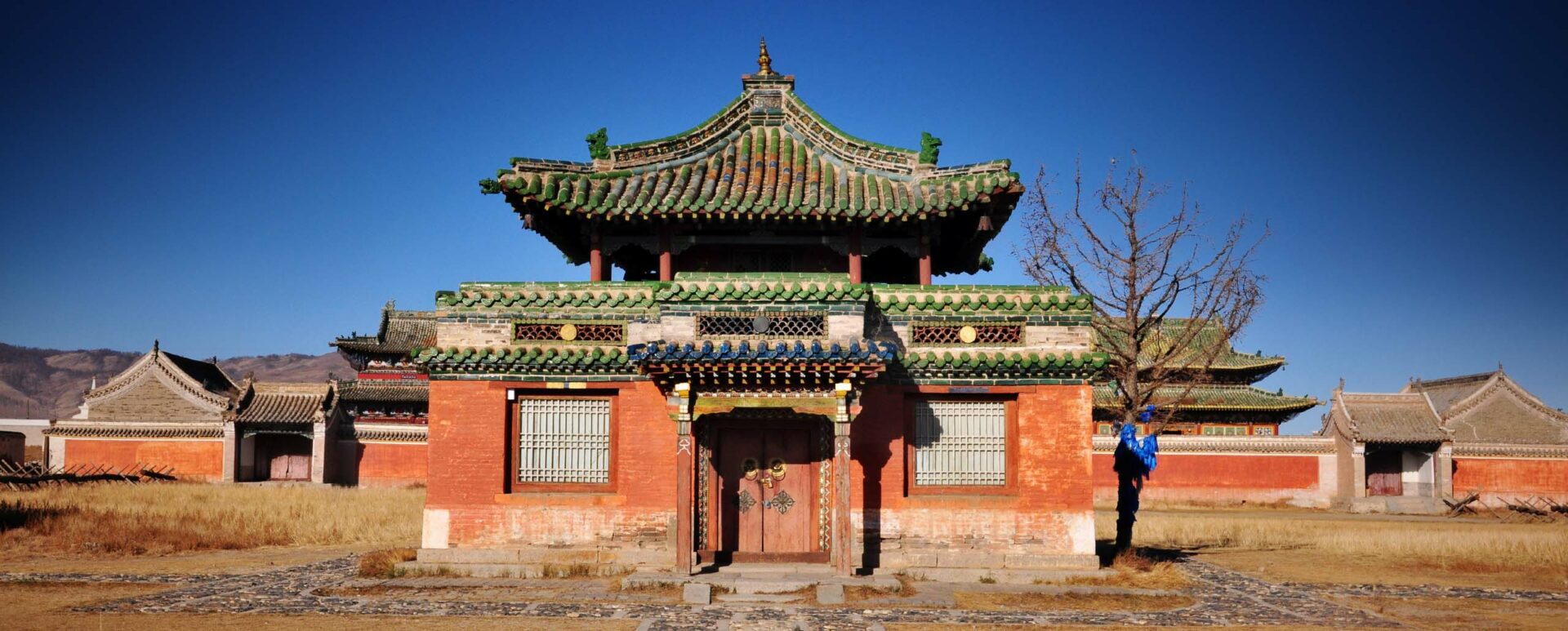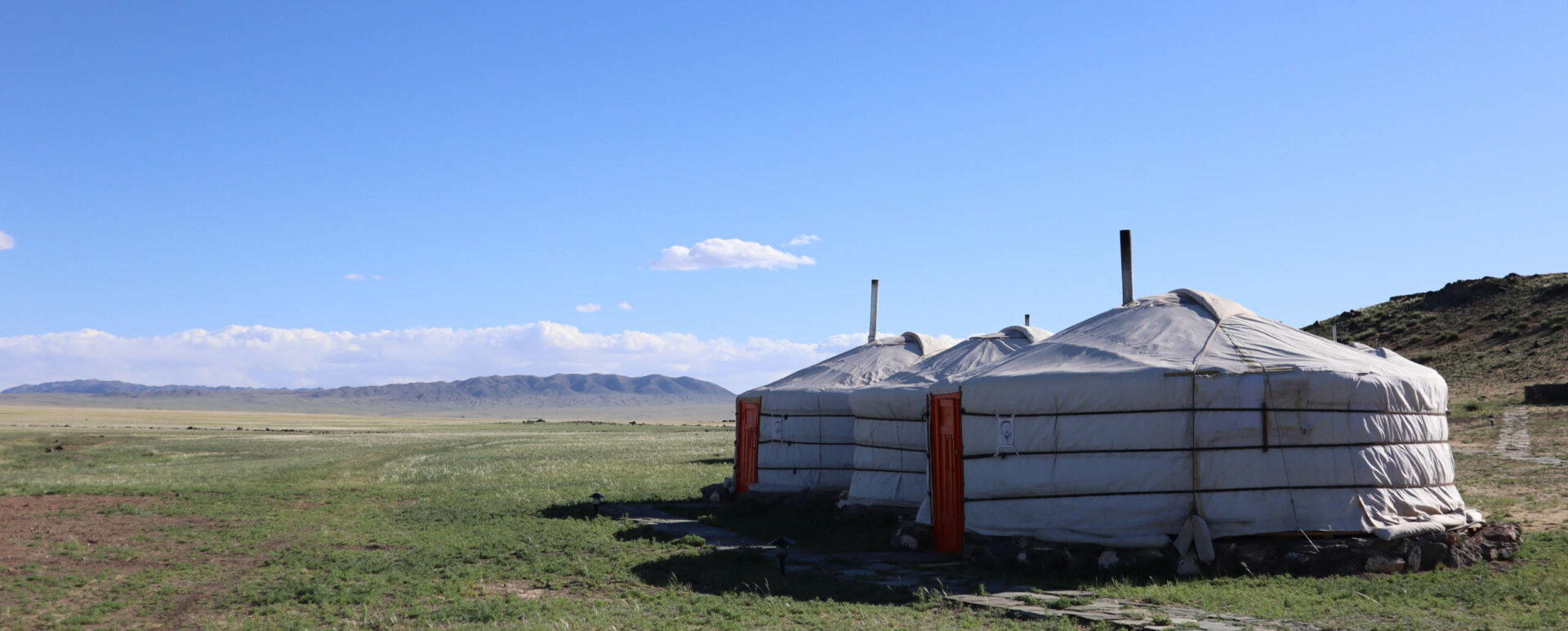This is a short account of our experience with Mongolian eagle hunters at the Sagsai Eagle Festival and what made it so enthralling.
The Kazakhs say that the place in which they feel their heritage and culture is most concentrated is in Bayan-Ölgii , a small aimag, or province, in western Mongolia. They first moved here in the 1840s, fleeing the expanding Russian Empire, when the Chinese and Russian borders separating Kazakhstan from Mongolia had not yet been drawn.
It was here that we came across the men (and a handful of women) who hunt with eagles. You’d be forgiven for thinking that eagle hunters were the stuff of myth and legend, but in this remote corner of a little-visited nation, the ancient practice still continues. The tradition reaches so far back into history that it even features in the writings of the legendary explorer, Marco Polo.
Eagles, which are essential to catching the prey that provides the means to survive a harsh Mongolian winter, are either captured from the nest or trapped in the wild as a young adult bird. The latter is preferable as, at this stage, the bird has already learnt to survive on its own and has the predator’s killer instinct. Eagles remain with their hunters – a prized possession – for seven years before being released back into the wild to breed. During this time, they are trained to work closely with their hunters to catch foxes whose thick pelts are used for winter coats and blankets. Our visit to Bayan-Ölgii coincided with the Sagsai Eagle Festival, the smaller of two annual festivals and a chance to display the prowess of both hunters and birds. Only the most well-trained eagles will follow their hunter’s unique calls and fly down off the mountain to land on their outstretched arms.

